England elections 2022: What does a boundary commission review mean for St Albans?
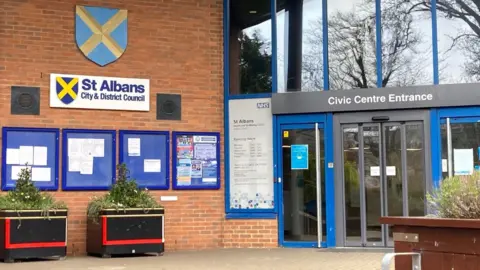 Katy Lewis/BBC
Katy Lewis/BBCAll the council seats in St Albans are up for grabs in this year's local council elections - instead of the usual third - following an electoral review by the Local Government Boundary Commission for England (LGBCE). But what is an electoral review, why does it happen and what does it mean for an area?
The LGBCE is an independent body accountable to Parliament which recommends fair electoral and boundary arrangements for local authorities in England.
Local elections on 5 May will see the number of councillors on St Albans City and District Council reduced from 58 to 56 after the commission's review changed ward boundaries.
Although there will still be 20 wards in the district, which includes Harpenden and Wheathampstead, the boundaries of all of them, except for Sopwell and Harpenden West, will change. There will be 17 three-councillor wards, two two-councillor wards and one single-councillor ward.
Residents across the St Albans district, which has a population of just over 147,000, are being asked to check their polling cards as their polling stations might also be different.
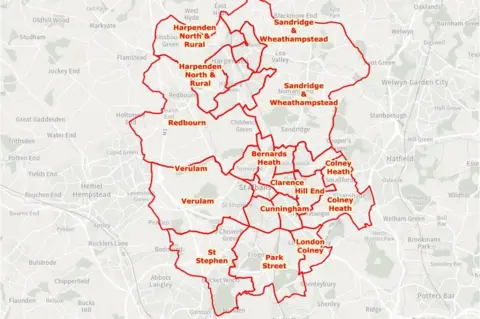 Local Government Boundary Commission
Local Government Boundary CommissionThe boundary commission said it had received more than 130 comments from people and organisations to help decide the new electoral areas.
Changes include the Lea Valley area being restored to a Wheathampstead-based ward and Grange Street and Dalton Street in the city centre being placed wholly within St Peters ward, rather than being split with the Batchwood ward.
LGBCE chair, Professor Colin Mellors, said: "We believe the new arrangements will guarantee electoral fairness while maintaining local ties."
An interactive map can be found on the LGBCE website.
You might also be interested in:
What is an electoral review?
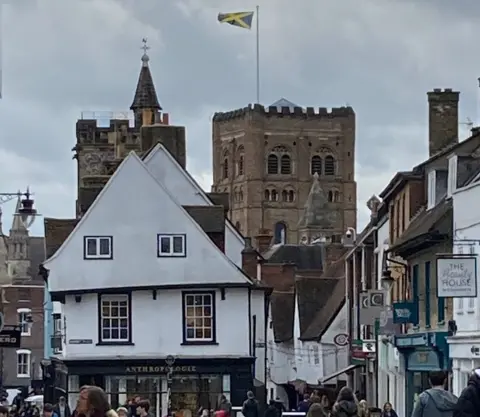 Katy Lewis/BBC
Katy Lewis/BBCThe LGBCE says the aim of an electoral review is to recommend ward boundaries that mean each individual councillor represents about the same number of voters, ideally within 10% of being exactly equal.
It said that when doing this, it also aims to ensure that the ward boundaries "reflect the interests and identities of local communities".
Who carries out an electoral review and why do they happen?
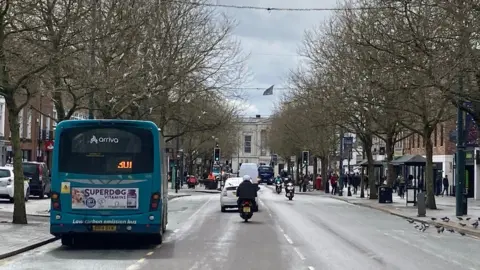 Katy Lewis/BBC
Katy Lewis/BBCThe Local Government Boundary Commission conducts the review and draws the boundaries.
Its communications and public affairs manager, Glynn McDonald, said there are three reasons why a review is conducted.
1. An authority asks for one.
2. Time has elapsed - the law says a review must be conducted "from time to time" - the commission takes that to mean "roughly 15 years".
3. They are triggered by information about the electorate provided by the authority to the commission "routinely every year".
Mr McDonald said the St Albans review "came about as part of a routine electoral review".
"Six of the 20 wards were more than 10% away from the average number of voters per councillor," he said.
"It was also last reviewed in 1998 so it was a combination of reasons two and three."
What happens in an electoral review?
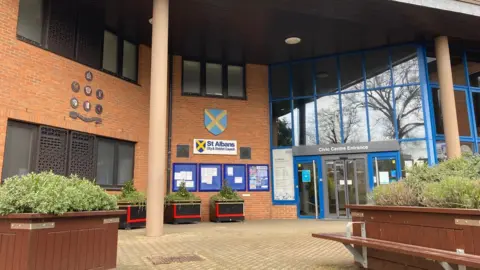 Katy Lewis/BBC
Katy Lewis/BBCThe commission first looks at the number of councillors an authority has.
It asks councils to look at its "committee structure and models of governance" and discuss the number of councillors needed.
"It was the view that St Albans could move from 58 to 56 councillors," Mr McDonald said, "this was decided in consultation with the council".
"Again this is not unusual."
Once the number of councillors has been decided, the commission looks at the pattern of wards.
"Sometimes we are able to accommodate a slight change in the number of councillors by changing a relatively small number of wards," Mr McDonald said, "but it depends on geography and where the communities lie.
"We try to maintain communities and balance out the change in the number of councillors and this can lead to changes across the district.
"There was nothing wrong with how St Albans was laid out before, it's just some areas had grown more than others."
He added that balance was needed in order to get to the theoretical number of voters per councillor and you could not have an odd-shaped ward just to fit the right number of people into it.
"You have to keep communities together, not just drawn a straight line though them," he said.
"But at the same time you can't have a strangely-shaped ward - they need to make sense."
Is an electoral review political?
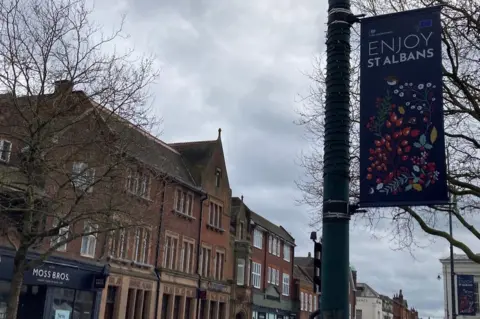 Katy Lewis/BBC
Katy Lewis/BBCBoundary reviews can have electoral effects but this is not looked at as part of the process.
Mr McDonald said that its reviews are "not at all" political.
"All commissioners are independent, there are no party affiliations," he said.
"We can take comments from political parties about our plans but they are treated the same way as comments from other organisations, such as the Chamber of Commerce.
"If a political party or a Chamber of Commerce say our proposals will split communities in a way that is not helpful, or say that the proposed changes will mean that a certain part of the borough will remain unequal, then we will look at it.
"But if they say they will be politically disadvantaged, we don't take that into account.
"It's all about representation and electoral equality."
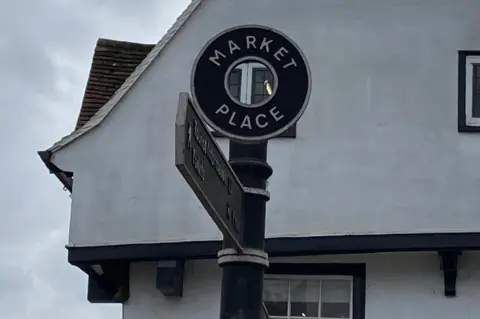 Katy Lewis/BBC
Katy Lewis/BBCThe council is currently run by the Liberal Democrats with the Conservatives the second biggest party with seven fewer seats, so both will be looking to gain control in the May vote.
A full list of candidates is available here.
Is there an election in my area?

- POSTCODE SEARCH: Is there an election in my area?
- WHAT'S HAPPENING WHERE: Really simple guide
- ENGLAND: What's at stake in the local council elections?
- GUIDE: How to vote in local elections


Find BBC News: East of England on Facebook, Instagram and Twitter. If you have a story suggestion email [email protected]
